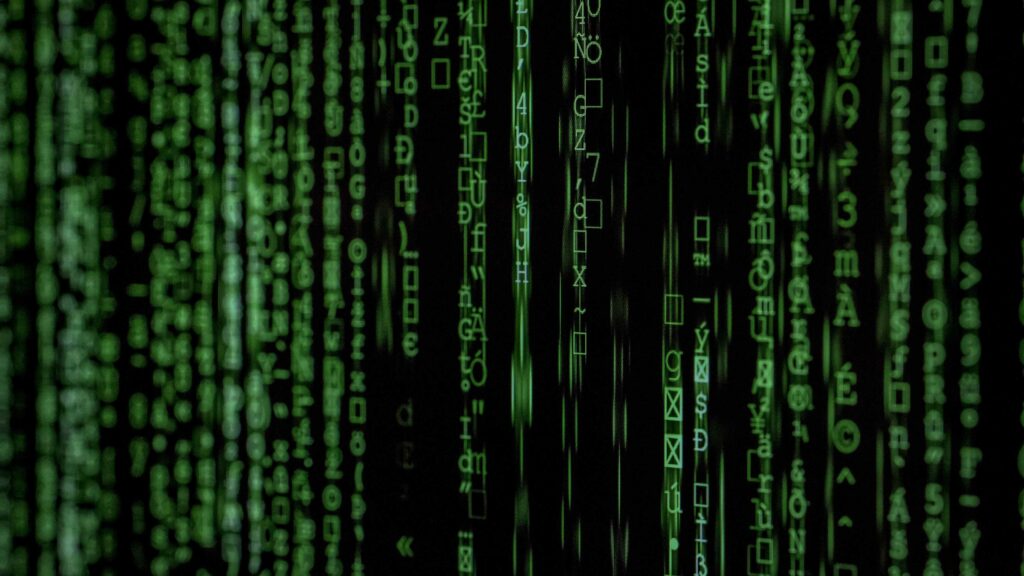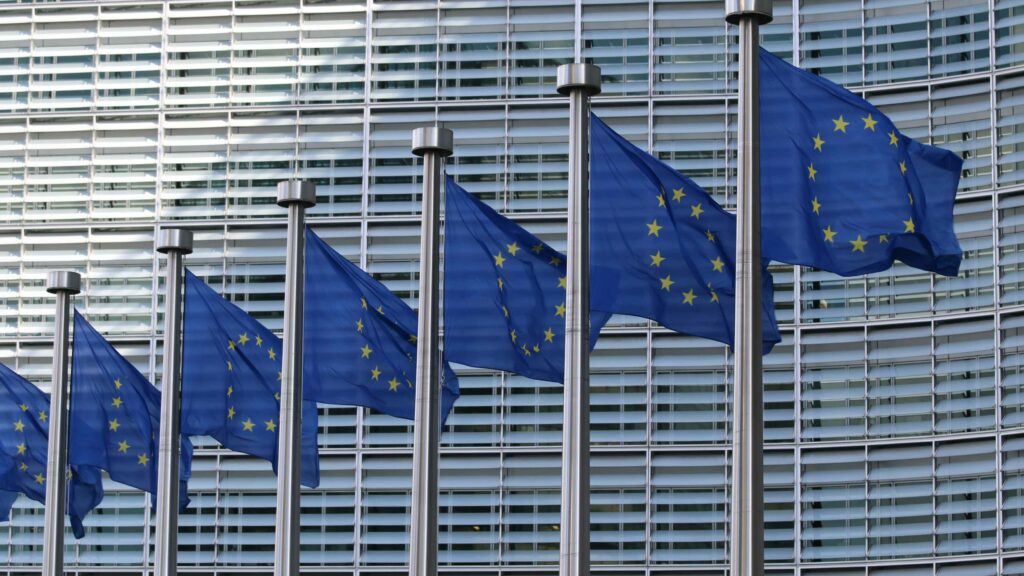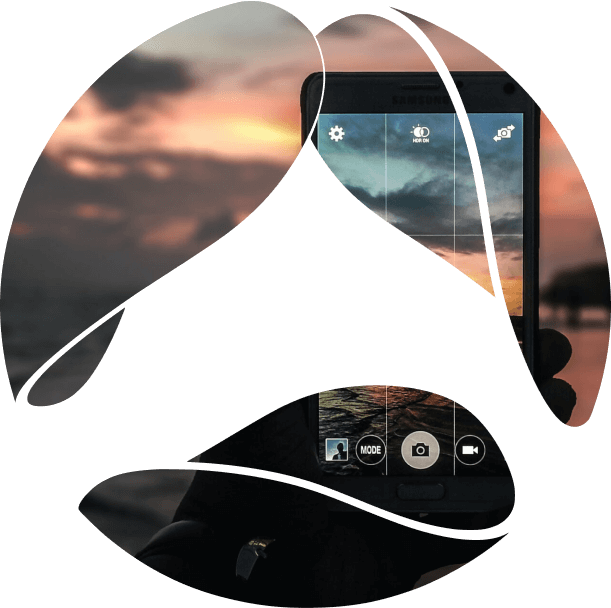Avenga Digital solutions for Pharma and Life Sciences
Human digital twins – for digital natives
Another meaning of digital twins is the purely true digital meaning of it.
Imagine that you as a person are represented digitally. Your digital activities, behavior, decisions, and future decisions are not only known but silently influenced by your digital shadow.
And no, don’t think about a 1:1 digital simulation of your body, because it’s another meaning within the health context. We’ll address futuristic digital replicas next, so let’s focus now on near term meanings and consequences.
“Down in the park, with a friend called Five”
The dystopian AI (Artificial Intelligence) future usually portrays humanoid robots who are cruel to people. They live among the people and interact with them in the physical world. In other words, it’s a digital being which becomes physical by using human-like shape, skin and motion.
In the case of human digital twins, it is the humans who are being gradually replicated into the digital world, without any individual physical representation (ok, you can think of fiber optics and huge data centers, and yes, you are correct).
And no, it’s not the Matrix-kind, or a Second Life type of representation. It’s much more in the shadows. No 3D models, ‘just’… your behavior, emotions and decision patterns. Sorry, there may not even be another funny avatar of yours anymore.
Your digital twin lives somewhere within the layers of complex neural networks and petabytes of data, so as to help train them even better. Yet, it’s always close to you, following your every step and even making you do things it wants for its creators.
“Reality is that which, when you stop believing it, doesn’t go away” (Philip K. Dick) Every time you access a digital device, even when you move or just sit with your smartphone, there’s data generated. And, this data is used to build your digital profile. With enough data fed constantly to the cloud and into new AI and machine learning technologies, your digital twin is being created. Yes, at this very moment, and the moment after.
Every time you access a digital device, even when you move or just sit with your smartphone, there’s data generated. And, this data is used to build your digital profile. With enough data fed constantly to the cloud and into new AI and machine learning technologies, your digital twin is being created. Yes, at this very moment, and the moment after.
It’s not just your web browser, not even your smartphone, but also your car, and all the IoT-based wearable devices such as smartwatches that monitor your heartbeat as you watch another episode of a Netflix series or watch online advertisements.
Bots eating your web application alive are just scratching the surface of it.
There are modern ways of combining all of this real-time data into a single digital image of your digital twin.
There’s a famous saying, at least in the IT world, “if it looks like a duck, swims like a duck, and quacks like a duck, then it probably is a duck”.
In our context: if it clicks/taps like you, if it searches like you, if it buys like you, if it goes/drives to the places like you, if it sleeps and walks like you, then it is you, your digital twin.
This trend and idea is not about the classical analysis of your behavior and predicting your behavior in the future, and it’s not even about just emulating your future actions. It’s about softly, kindly, and inevitably making these decisions for you.
Influencing the results of elections or filling your e-basket with useless items is just the beginning.
Digital replicas
I asked my colleague Lyubomyr Senyuk, Head of Avenga R&D, to share his thoughts about digital twins.
The concepts of digital twins, digital replica, and digital assistant are so over-speculated and ambiguous that, to be honest, I simply was skipping most of the information regarding it as non-relevant. I was not even trying to call data collected by wearables a ‘digital twin’.
But things changed this year in the early COVID-19 times, when everybody was trying to contribute to fighting the virus and Google with Apple proposed their contact tracking solution; https://covid19.apple.com/contacttracing.
They proposed to loosen up the security a bit on phones for opted-in users and allow their devices to see and remember each other through Bluetooth. In case one of the users within the “network” becomes COVID positive, the system is allowed to privately inform devices of the exposure time and distance range.
So what actually happened? Your smartphone becomes your primitive digital twin/companion constantly following you and you empower “him” to get familiar with the other digital twins around you, but without your special confirmation. In this case you delegate to him some primitive functions. But who stops you, for example, from allowing your digital companion to talk to cafes around you and check for specialties and personal propositions?
As for me, this abstraction seems to be very useful even in this primitive form and gives some insights into what future digital twins will look like:
- They will form a friends network and probably more complex structures involving their masters (I hope we can use this word for at least 100 years in the human – machine relationship).
- They will unfriend devices spreading rumours and selling confidential information entrusted to them.
- They will become more powerful (decision making) and intellectual.
- They will probably become conscious at some point in time.
- Humanity will be forced to extend communication channels with them (probably neuro interfaces) to keep connected with them.
In this symbiotic form of the digital twins evolution, the question about full human replicas looks like the desire for humans to climb trees like monkeys. There is no place for full human replicas in the future I described, but I think our grand-children will definitely be able to talk at our children’s graves to pretty smart “replicas” of them.
Befriend your digital twin, for free
The most popular reaction to this trend is, well, the lack of any, mainly because of the total lack of awareness of this phenomenon.  “You know, I know this steak doesn’t exist. I know that when I put it in my mouth, the Matrix is telling my brain that it is juicy and delicious.” Cypher, The Matrix
“You know, I know this steak doesn’t exist. I know that when I put it in my mouth, the Matrix is telling my brain that it is juicy and delicious.” Cypher, The Matrix
Most people will even enjoy being ‘helped’ and invisibly steered towards the ‘right’ decisions. It does not require any effort, as the decision making burden is no more.
But… think for a second. Building the digital twin is a very complex technological problem, requiring vast amounts of computing resources and data, and it is costly. What is the motivation for those IT giants to do this for us for ‘free’?
Digital detox – starve your digital twin!
One of the concepts to defend against massive privacy violations leading inevitably to the digital twin, is to deprive it from its food; and the food in this case is data.
The most dangerous situation for your privacy is when all your data belongs to the one organization. Hint: do you know why Android OS is free and open sourced?
Switch off your smartphone and just use it as dumb phone. Use VPNs, TOR, local navigation instead of internet maps, Linux, etc. and block tracking cookies. The delete Facebook (#deletefb), delete Google (#deletegoogle), and delete Instagram movements are getting stronger, etc.
Or even more radical, go to places when there’s no internet connection at all.
For the majority of us it is all too cumbersome and discomforting to do so. So, again, others are attempting to at least slow down the process.
Regulations, regulations, regulations
 The European Union and other major institutions are aware of the situation and are trying to impose more and more stricter data gathering and processing rules (GDPR, and soon ePrivacy). In the meanwhile, internet giants analyze your every click, record your voice, and track your every move.
The European Union and other major institutions are aware of the situation and are trying to impose more and more stricter data gathering and processing rules (GDPR, and soon ePrivacy). In the meanwhile, internet giants analyze your every click, record your voice, and track your every move.
When we think about regulations, unfortunately we see only the surface of it; like signing another GDPR form to enable another company to process our data, or clicking on annoying pop-ups enabling various kinds of cookies in order to just let us read something or find something on the internet.
→ Read more about Essentially, Data is good. It’s the use cases that can be problematic
We never know for sure where the technology world is going, however privacy is one of the strong trends nowadays and for a very good reason. We already mentioned this in our trends for 2020 and the revised trends for 2020 (COVID-19 update).
There will be changes in requirements analysis, architecture, and security of IT systems to prepare them for newer and stronger regulations to come.
Knowing what your customers want is a good thing, but there’s a boundary which should never be crossed, because it may cost you when you lose their trust.
→ Explore Avenga data services
As you can see, we at Avenga, are truly aware of what is happening and what is on the horizon, and we are eager to help you to provide better privacy and security in your digital products.


 Every time you access a digital device, even when you move or just sit with your smartphone, there’s data generated. And, this data is used to build your digital profile. With enough data fed constantly to the cloud and into new AI and machine learning technologies, your digital twin is being created. Yes, at this very moment, and the moment after.
Every time you access a digital device, even when you move or just sit with your smartphone, there’s data generated. And, this data is used to build your digital profile. With enough data fed constantly to the cloud and into new AI and machine learning technologies, your digital twin is being created. Yes, at this very moment, and the moment after. “You know, I know this steak doesn’t exist. I know that when I put it in my mouth, the Matrix is telling my brain that it is juicy and delicious.” Cypher, The Matrix
“You know, I know this steak doesn’t exist. I know that when I put it in my mouth, the Matrix is telling my brain that it is juicy and delicious.” Cypher, The Matrix The European Union and other major institutions are aware of the situation and are trying to impose more and more stricter data gathering and processing rules (GDPR, and soon ePrivacy). In the meanwhile, internet giants analyze your every click, record your voice, and track your every move.
The European Union and other major institutions are aware of the situation and are trying to impose more and more stricter data gathering and processing rules (GDPR, and soon ePrivacy). In the meanwhile, internet giants analyze your every click, record your voice, and track your every move.






